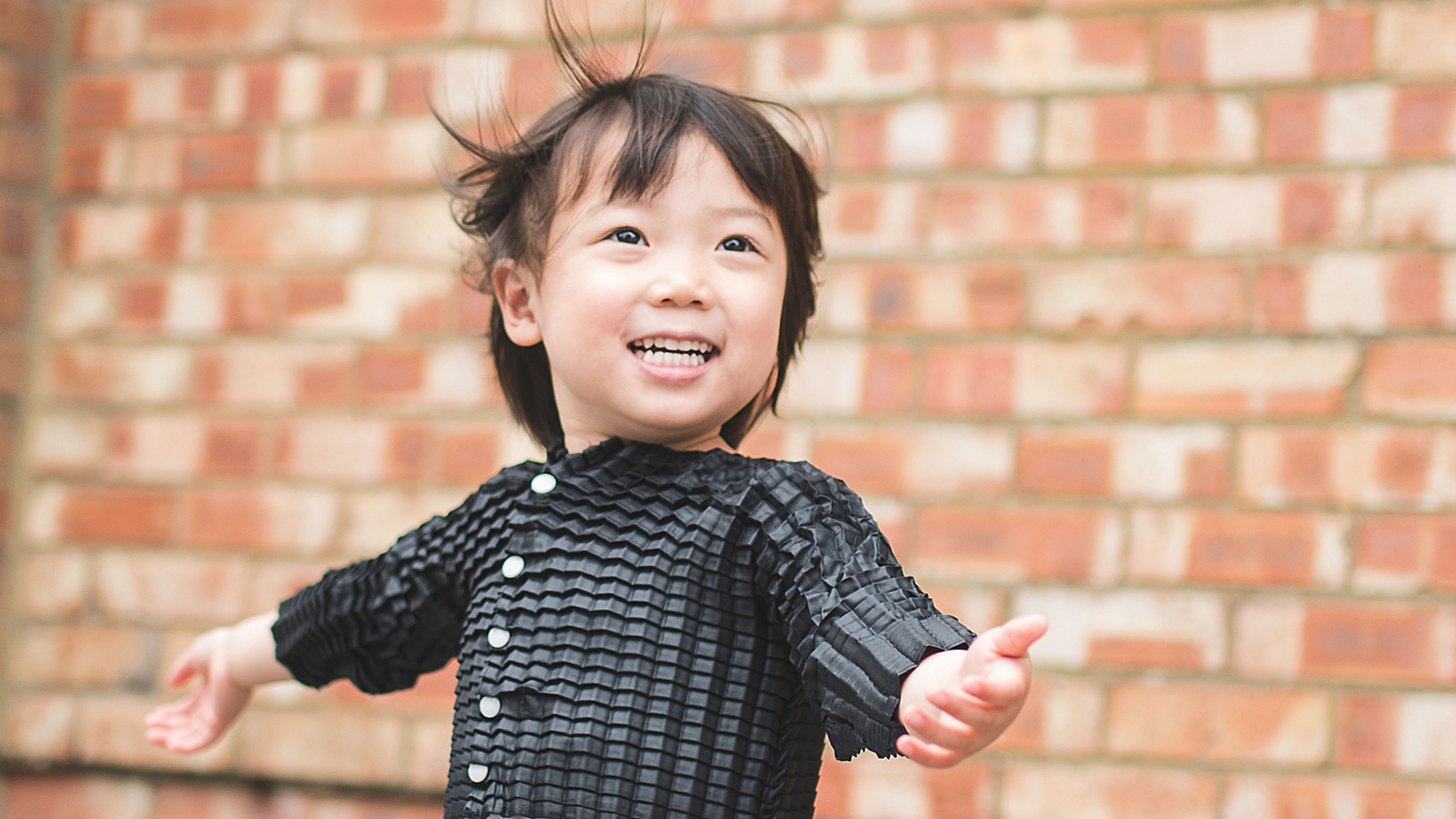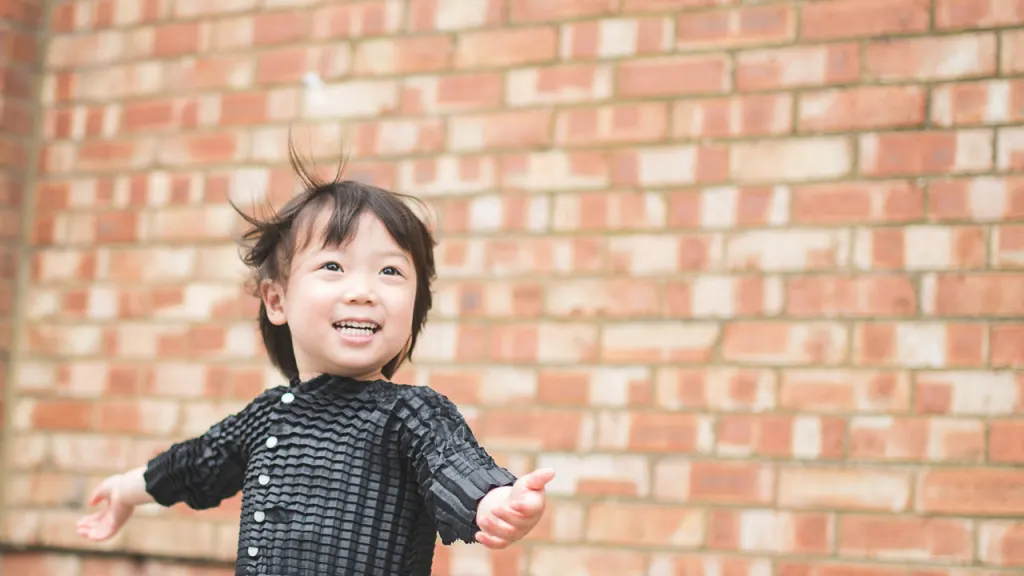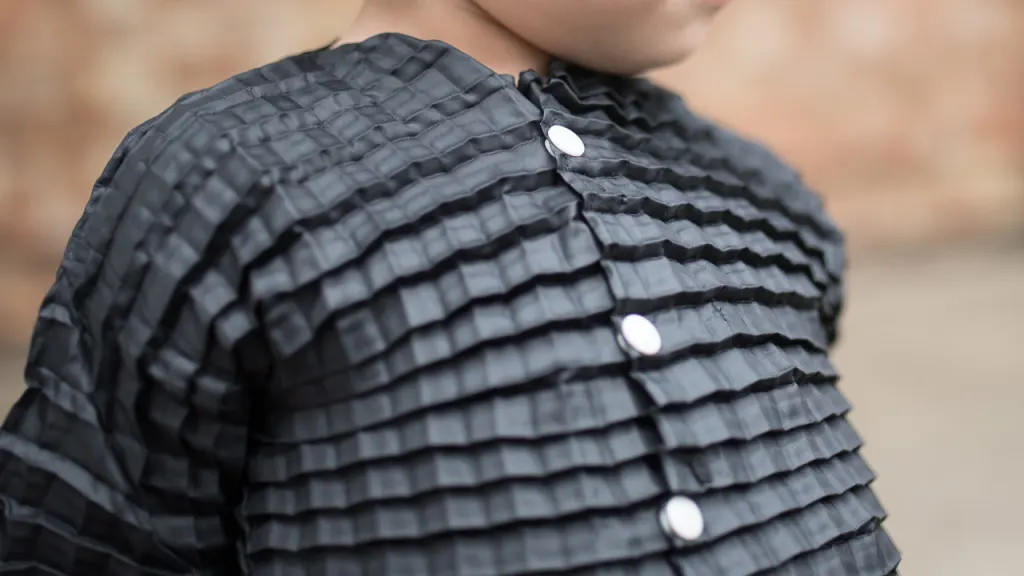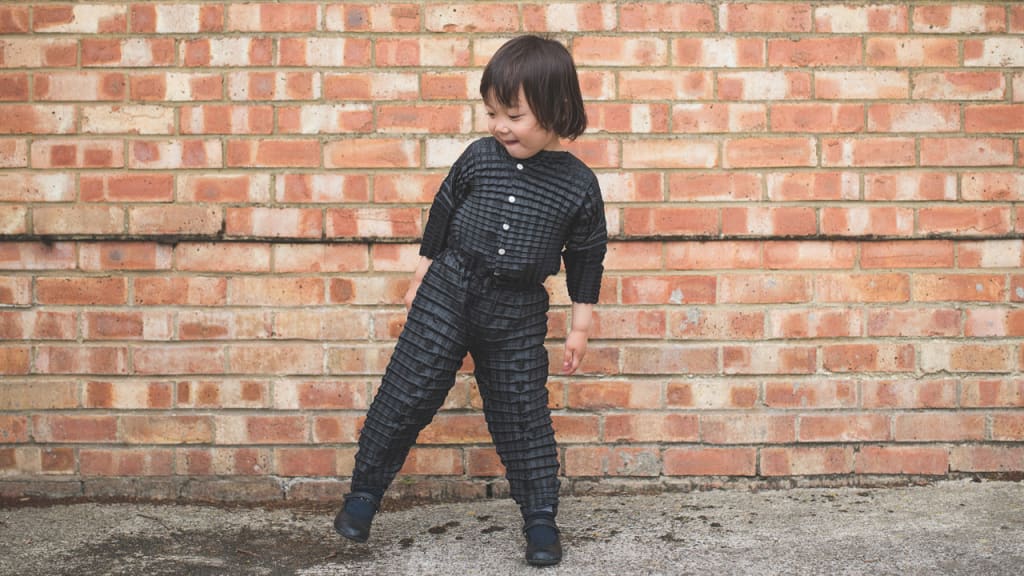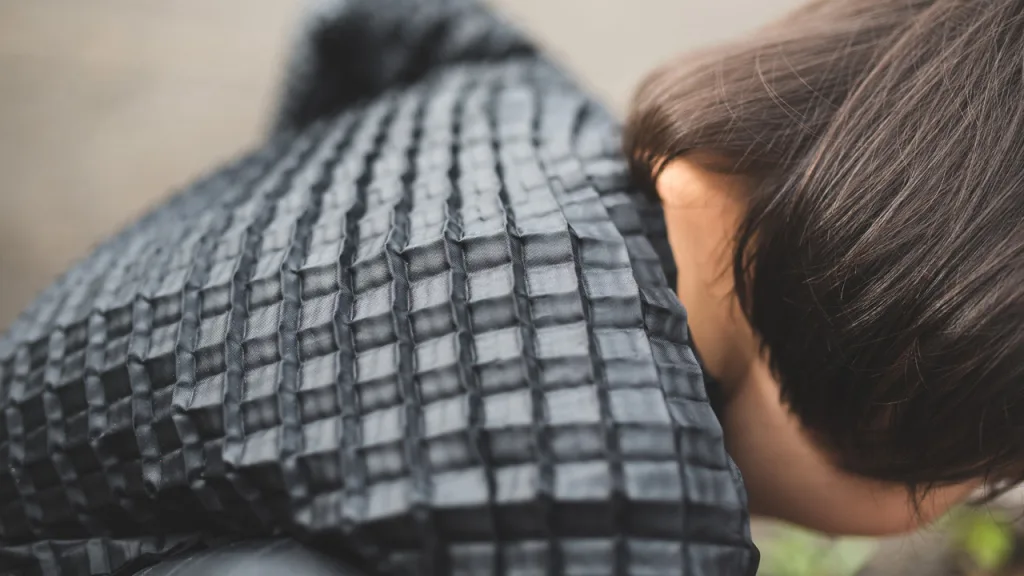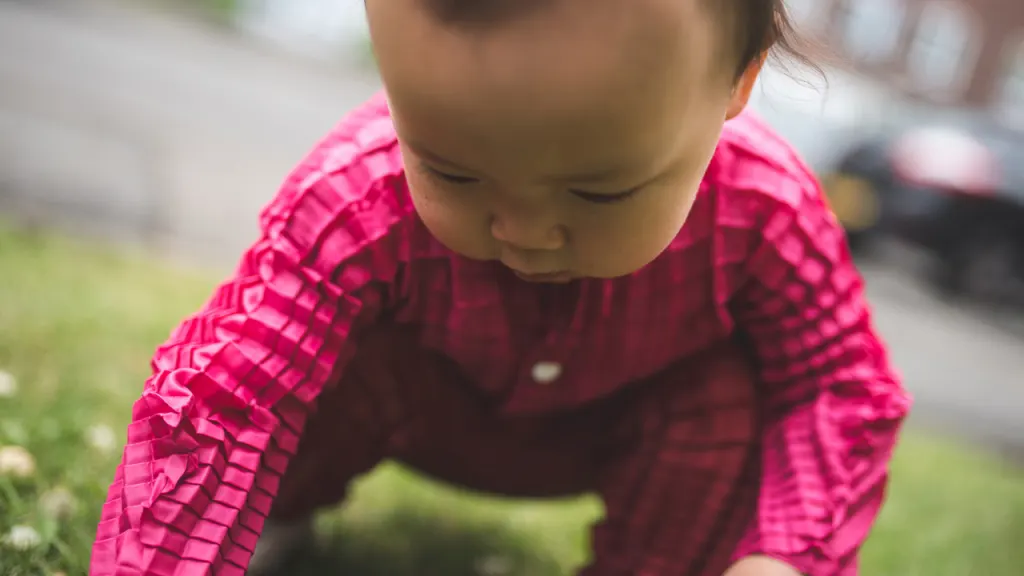When Ryan Yasin bought a gift of clothing for his newborn nephew, the baby had outgrown it by the time it was delivered. Yasin, a master’s student in London’s Royal College of Art’s Innovation Design Engineering program, was inspired by the problem of short-lived kids’ garments, and wondered if it would be possible to design clothing that could grow along with children.
He started experimenting and realized that by pleating synthetic fabric in a particular pattern, it was possible for a piece of clothing to stretch in both directions. He sewed a prototype–a pair of tiny pants–and formed the pleats by heating up the fabric around a special mold in his oven at home. The prototype worked: It fit both his baby nephew and his two-year-old niece.
“Could Petit Pli instill a message that fast fashion is unnecessary and longevity is key?” [Photo: courtesy Petit Pli]A new line of gender-neutral, waterproof outerwear called Petit Pli, under development now, uses the same concept. Kids can go through six or seven sizes in their first two years; so can the brand’s new jacket, which fits children from 6 months old to 36 months. In theory, parents can reduce consumption and waste.
“I believe new parents and young children are both at a stage in their lives where they are open to learning and absorbing new information—could Petit Pli instill a message that fast fashion is unnecessary and longevity is key?” Yasin says. “I really do hope so.”
If parents can avoid buying six new jackets as a child grows, in addition to saving money, they can also avoid the environmental footprint of manufacturing, transporting, and discarding each of those jackets.
If parents can avoid buying six new jackets as a child grows, in addition to saving money, they can also reduce their environmental footprint. [Photo: courtesy Petit Pli]The designs have some superficial similarity to novelty “bubble shirts” that also expand from a tiny size, but unlike those shirts, the clothing is designed to hold a defined silhouette at each stage of expansion. Yasin, who has a background in aeronautical engineering, took inspiration from the way that nano-satellites are packed. “The expanded shape [of the clothing] is directly determined by the packing ratios of the material structure,” he says.
The grid-like folds on the outerwear point downward, both so rain can easily run off and crumbs won’t get caught in the folds when kids have lunch. When it’s not in use, the jacket is tiny enough to fit in a parent’s pocket. The fabric is strong enough that it can last as long as a child can wear it, but if the clothing does wear out, because it uses a single material, it’s also recyclable. Yasin is investigating a take-back system that would recycle fibers from old clothing into new garments.
He doesn’t expect parents to dress kids entirely in expandable clothes; because the designs use a synthetic fabric, he says, they’re best for outerwear rather than wearing directly next to the skin. But he’s working on new designs. “In order to increase our impact against overconsumption, we’re working hard at developing our range to encapsulate a wider variety of garments,” he says.
Recognize your brand’s excellence by applying to this year’s Brands That Matter Awards before the early-rate deadline, May 3.
